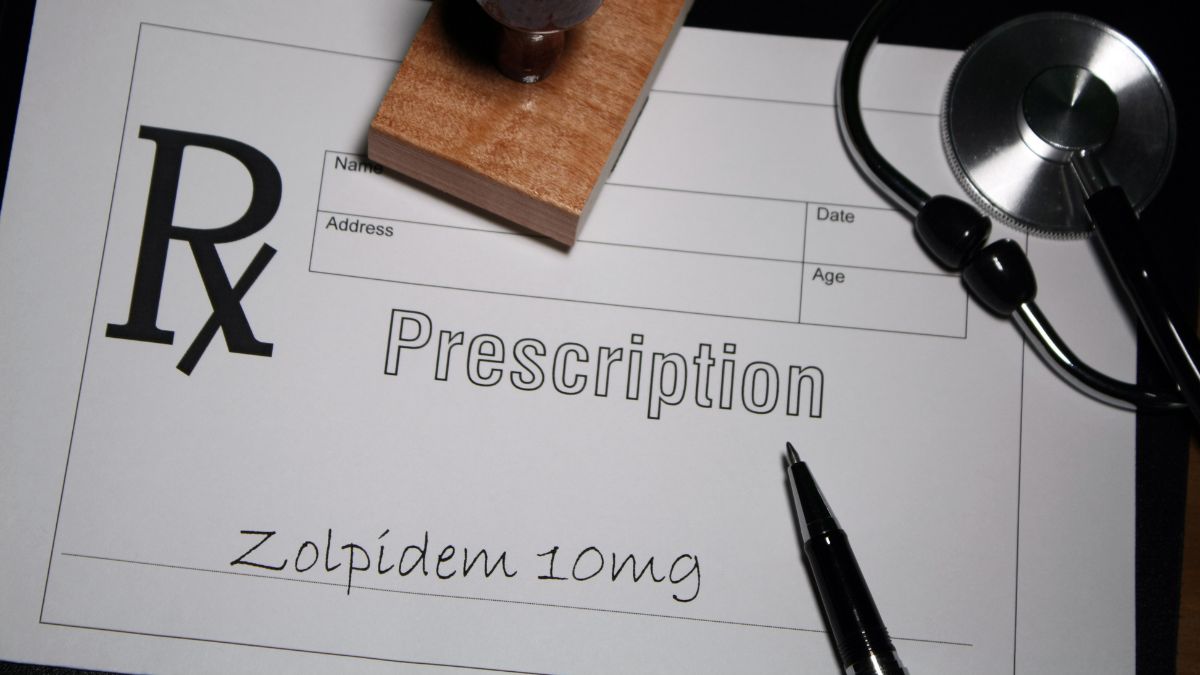If you or a loved one are considering sober living as part of the recovery journey, you may wonder: “How much does sober living cost?” and “How can I afford it?”
A sober living home is a type of transitional housing that provides a safe, supportive, and structured environment for people recovering from substance abuse.
The associated costs of sober living homes vary based on location, amenities, and level of support provided.
What is a Sober Living?
Sober living homes can be a solace for people dealing with addiction. It is a place that provides a structured and drug-free environment for people looking for support in their journey to sobriety.
Recovery homes typically have rules and guidelines in place to ensure that residents remain committed to their recovery goals. These rules often include regular drug testing, curfews, mandatory participation in support groups or therapy, and chores to promote responsibility and accountability.
The goal is to provide a supportive community where individuals can rebuild their lives while receiving the tools and resources they need to maintain sobriety.
How does it support recovery?
The pathway to recovery isn’t just about quitting an addiction but also about rebuilding a new life for yourself, which is free from the old urges and triggers.
It requires a lot of checks and balances to be kept in place so that a person can continue their sober journey freely. Sober living homes can be a safe haven away people who are struggling to maintain the balance and structure in their lives. Living with people going through the same struggles can provide a great amount of support and encouragement to stay on the path to sobriety.
How Much Does Sober Living Cost?
The cost of sober living homes can vary, but it averages between $500 to $5000 per month.
Sober living homes, sometimes known as halfway houses or recovery residences, offer individuals recovering from addiction a supportive and drug-free environment to continue their journey toward sobriety.
Note that while many people use sober living and halfway houses interchangeably, they often denote different transitional living situations.
The sober living Los Angeles cost can range from $500 to $15,000 per month, depending on factors such as location, amenities, and the level of care provided.
Call Design for Recovery to Begin Your Healing Journey!
Reach out to our team to discuss sober living options and next steps toward a healthier routine.
What’s Included in the Cost of Sober Living?
The cost of sober living typically covers more than just the rent, as it includes several essential services and amenities that support recovery. While the specifics can vary depending on the facility, here are common inclusions:
Housing and Utilities:
Includes basic housing, with shared or private rooms. Utilities such as electricity, water, gas, and internet are often included in the rent, but it's important to clarify this with the facility.
Supportive Environment:
They provide a structured and substance-free environment, with rules that promote sobriety, accountability, and personal responsibility. This includes curfews, random drug testing, and regular house meetings to encourage group support and communication.
Recovery Programs:
Many recovery homes include access to support groups and recovery meetings. This could be in the form of 12-step programs (like AA or NA) or other therapeutic group sessions designed to support long-term sobriety.
Counseling and Therapy:
Some sober living homes offer individual or group therapy sessions to address the emotional and psychological aspects of addiction. These services may be included in the cost or charged separately.
Peer Support:
One of the key benefits of sober living is the community aspect. Many homes foster a sense of peer support, where residents can lean on each other for motivation and encouragement as they work toward recovery.
Basic Amenities:
Depending on the facility, the cost may include basic amenities such as laundry facilities, furniture, and kitchen access for preparing meals. Some homes may even provide food or meal plans as part of the cost.
Are There Additional Costs Beyond Monthly Rent?
The sober living cost typically covers rent for shared accommodations, but it may not include all expenses.
Additional sober living costs may include utilities, food, transportation, personal care items, medication, and therapy.
Here are some approximate ranges of additional costs of sober living to consider:
- Utilities: $50 to $200 or more per month
- Move-In Fees (deposit or first and last month's rent): This helps cover any damages or unpaid rent if a resident leaves.
- Food: $100 to $400 or more
- Transportation: $50 to $300 or more
- Personal Care Items: $20 to $100 or more per month
- Medication: A few dollars to upwards of hundreds (depending on brand name and health insurance coverage)
- Therapy: $20 to $100 or more per session
Note that actual costs vary based on location, lifestyle, and specific needs.
How Do People Pay for Sober Living?
People pay for sober living through various means, including self-payment, financing, scholarships, grants, or state funding for low-income residents.
Others may allow residents to work or volunteer in exchange for reduced or waived fees.
Most sober living homes charge a monthly fee for rent, utilities, and other services. The cost may vary depending on the location, size, and amenities of the sober living home.
Some sober living homes may also require a security deposit or other fees when you move in.
Self-Payment Options
Many residents use their savings or emergency funds to cover the initial months in a sober living home until they secure regular employment.
Some homes may also offer self-pay discounts or flexible payment plans for people who can pay their sober living costs upfront or in larger installments.
Financing Options
For those with good credit, bank loans may be an option to help cover sober living expenses. However, carefully review the loan terms, including interest rates, to fully understand the financial commitment.
Scholarships and Grants
Some nonprofit organizations offer scholarships or grants to qualified applicants to assist with the cost of sober living.
Certain sober living facilities may also have scholarship programs to support underprivileged residents.
Government Assistance
Government agencies or local organizations may provide financial assistance or resources to individuals seeking recovery support.
Eligibility criteria and available programs vary, so we advise you to check with relevant agencies to explore potential assistance options. Some options for government funded programs are:
- Residential Assistance Program (RAP): In Massachusetts, RAP offers temporary financial assistance to individuals in early recovery who need help covering the cost of sober living in MASH-certified sober houses. This program covers initial move-in costs and short-term rent support.
- Access to Recovery (ATR) Program: Also in Massachusetts, ATR provides financial assistance for sober living, including partial or full sober house fees, short-term rental assistance, employment support, and recovery coaching.
- Recovery Housing Program (RHP): Funded by the U.S. Department of Housing and Urban Development (HUD), RHP allows states and the District of Columbia to provide stable, transitional housing for individuals in recovery from substance use disorders.
Contact Design for Recovery Today!
Fill out our quick form to connect with a peer mentor and learn how our sober living community supports accountability, structure, and personal growth in recovery.
Does Insurance Pay for Sober Living?
Generally speaking, health insurance doesn’t cover sober living. While health insurance often covers various aspects of substance use disorder treatment, such as individual therapy or outpatient programs, sober living is a different matter.
This is because sober living homes are not typically considered formal medical facilities under the Affordable Care Act (ACA). They don’t usually provide medical treatment or supervision.
Some aspects related to sober living that may be covered by insurance:
Outpatient Rehabilitation and Therapy:
While sober living itself isn't covered, many insurance plans will cover outpatient rehab, therapy, or counseling services that may be offered in conjunction with sober living. These services are typically part of a comprehensive treatment plan and may be covered under behavioral health or substance use disorder benefits.
Transitional Services:
Some insurance plans may cover partial hospitalization programs (PHP) or intensive outpatient programs (IOP), which are often part of the recovery process before transitioning to sober living.
State Medicaid Programs:
In certain states, Medicaid may provide coverage for certain substance use disorder treatments, including therapy, detox, and residential treatment. While sober living homes are typically not covered, if the home offers therapeutic services or intensive outpatient programs, those aspects may be eligible for reimbursement under Medicaid.
Private Insurance and Health Savings Accounts (HSAs):
Some individuals with private insurance or Health Savings Accounts (HSAs) may be able to use their insurance to cover some medical services related to addiction treatment (e.g., outpatient therapy or medical detox) and use their HSA funds for sober living-related costs. However, sober living homes themselves are not typically covered.
If you have health insurance, check to see what kind of coverage you have and what services or amenities are included in your plan.
Is Residing at a Sober Living Facility Tax-Deductible?
The IRS does not categorize the expenses associated with residing at a sober living home as tax-deductible medical expenses. However, we still advise you to consult a tax professional or financial advisor to know your tax situation.
Tax laws can be complex, and there may be specific circumstances where certain expenses related to addiction rehab and recovery could be eligible for deductions.
For example, you may be able to deduct the cost of rent if you can prove that staying in a sober living environment is necessary for your medical care and recovery.
Is Sober Living the Right Move for Your Recovery Journey?
Deciding whether sober living is for you or not is a big decision, that can potentially have a long term impact on your life. In sober living, you're surrounded by individuals who understand your journey and are committed to their own recovery, fostering a sense of community and accountability.
With daily routines, house rules, mandatory drug testing, and regular check-ins, sober living homes create a supportive environment that promotes consistency and responsibility.
Sober living homes help reduce the risk of relapse by providing a buffer between intense treatment and returning to the outside world.
If you're serious about maintaining sobriety and building a healthier future, sober living could be the right move to ensure your recovery journey is a success.
Take the Steps to Reclaiming Your Life With Us
If you or a loved one is ready to take the vital step towards lasting sobriety, Design for Recovery is here to help.
Our structured and caring environment offers more than just a place to stay. We provide comprehensive support, including one-on-one mentoring, medication monitoring, family services, employment support, and money management.
Don’t let financial concerns hold you back. Contact Design for Recovery today and find a solution that works for you on your recovery journey.
- What is a Sober Living?
- How Much Does Sober Living Cost?
- What’s Included in the Cost of Sober Living?
- Are There Additional Costs Beyond Monthly Rent?
- How Do People Pay for Sober Living?
- Does Insurance Pay for Sober Living?
- Is Residing at a Sober Living Facility Tax-Deductible?
- Is Sober Living the Right Move for Your Recovery Journey?
- Take the Steps to Reclaiming Your Life With Us
Begin Lasting Sobriety Now!
Frequently Asked Questions
Sober living can cost anywhere from $500 to $2,000 per month for a standard home, with upscale options going up to $5,000+ depending on location and amenities.
A lot of things come into play when figuring out the price. The location is a big one, homes in popular or upscale areas will typically cost more. Then there’s the level of care provided. If the home offers extra support like therapy, group sessions, or even personal training, it could cost a little extra.
Most insurance plans don’t cover sober living costs, but they may help with treatment programs like therapy. It’s worth checking with your provider.
Yes! Some sober living homes offer sliding scale fees, scholarships, or financial assistance to make it more affordable.
The basic services typically include housing, utilities, peer support groups, and sometimes therapy, life skills training, or job assistance.
Abraham, Amanda J., et al. “The Affordable Care Act Transformation of Substance Use Disorder Treatment.” American Journal of Public Health, vol. 107, no. 1, 2016, pp. 31-32, https://doi.org/10.2105/AJPH.2016.303558. Accessed 8 Sept. 2023.
Polcin, Douglas L., et al. “What Did We Learn from Our Study on Sober Living Houses and Where Do We Go from Here?” Journal of Psychoactive Drugs, vol. 42, no. 4, 2010, p. 425, https://doi.org/10.1080/02791072.2010.10400705. Accessed 8 Sept. 2023.
Publication 502 (2022), Medical and Dental Expenses | Internal Revenue Service. www.irs.gov/publications/p502.
Treatment, Center For Substance Abuse. “Chapter 5—Specialized Substance Abuse Treatment Programs.” A Guide to Substance Abuse Services for Primary Care Clinicians – NCBI Bookshelf, 1997, www.ncbi.nlm.nih.gov/books/NBK64815.







Written By
David Beasley